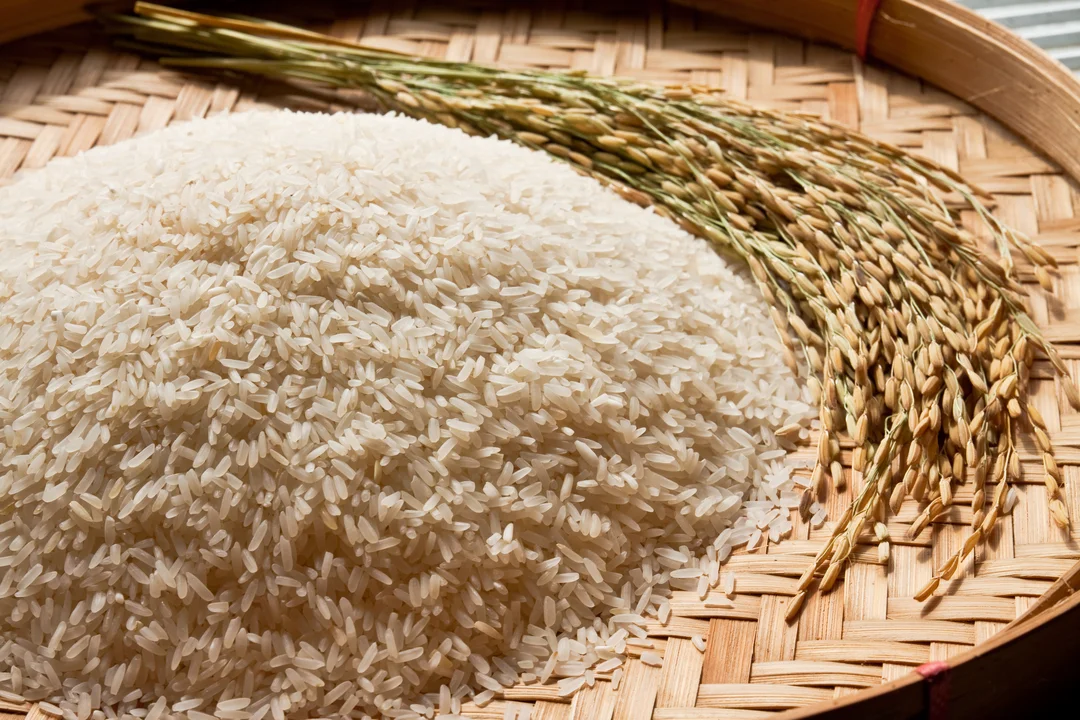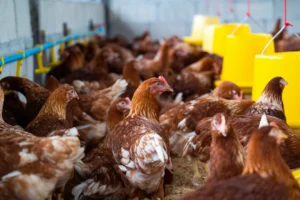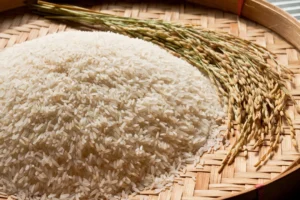In the intricate web of global agricultural commodities, rice stands as a pillar of food security for billions of people worldwide. As we navigate through 2025, the global rice market finds itself at a critical juncture, facing unprecedented challenges that are fundamentally altering traditional trade patterns and price dynamics. India’s controversial export restrictions, implemented in late 2024 and extended into 2025, have sent shockwaves through international markets, creating ripple effects that continue to reshape how this essential grain moves across borders. These policy decisions, coupled with increasingly erratic weather patterns linked to climate change, have created a perfect storm of supply uncertainty in a commodity that feeds nearly half the world’s population.
The ramifications of these disruptions extend far beyond simple price fluctuations. For import-dependent regions such as the Middle East, Africa, and parts of Southeast Asia, the consequences are particularly severe. Countries that have historically relied on stable rice imports are now scrambling to secure adequate supplies, often at significantly higher prices. Market analysts report that global rice prices have surged by an average of 28% since January 2025, with some premium varieties experiencing even steeper increases. This volatility has prompted urgent reassessments of food security strategies across multiple continents, with governments implementing everything from expanded domestic production incentives to strategic reserve buildups in an attempt to insulate their populations from potential shortages.
Adding further complexity to this already challenging landscape is the increasing frequency and severity of extreme weather events affecting key rice-producing regions. From devastating floods in Bangladesh and parts of China to prolonged droughts in Thailand and Vietnam, climate change is no longer a theoretical threat but a present reality disrupting harvests across Asia’s rice bowl. Agricultural scientists estimate that climate-related yield losses in major rice-producing countries have increased by approximately 15-20% compared to historical averages, further straining an already tight supply situation. These environmental challenges, combined with geopolitical factors, are forcing a fundamental reconsideration of global rice trade networks that have remained relatively stable for decades.
The Impact of India’s Export Restrictions
India’s decision to maintain strict export controls on rice throughout early 2025 represents perhaps the single most significant policy factor influencing global markets this year. As the world’s largest rice exporter, responsible for approximately 40% of international rice trade in recent years, India’s move to protect domestic supplies has created an immediate supply gap that other producing nations have struggled to fill. The restrictions, which include outright bans on non-basmati white rice exports and substantial export duties on other varieties, were initially implemented as temporary measures but have been repeatedly extended as Indian authorities prioritize domestic food security and inflation control over international market commitments.
The consequences of these restrictions have been particularly pronounced for African nations, many of which have grown increasingly dependent on affordable Indian rice imports over the past decade. Countries such as Senegal, Côte d’Ivoire, and Nigeria have reported price increases of 35-45% for basic rice varieties, creating significant budgetary pressures and food security concerns. The situation has prompted diplomatic tensions, with several affected nations calling for India to reconsider its position through both bilateral negotiations and multilateral forums. However, with Indian national elections approaching later in 2025 and food inflation remaining a politically sensitive issue, analysts see little likelihood of a major policy reversal in the immediate future.
Climate Change: The Persistent Disruptor
While policy decisions create immediate market impacts, the longer-term and perhaps more fundamental challenge facing global rice trade comes from climate change. The 2025 growing season has already witnessed multiple climate-related disruptions across Asia’s primary rice-producing regions. Thailand, traditionally the world’s second-largest rice exporter, has seen production forecasts reduced by approximately 12% due to irregular rainfall patterns and extended dry periods in key growing areas. Similarly, Vietnam’s Mekong Delta, responsible for the majority of that country’s rice exports, continues to grapple with saltwater intrusion issues as rising sea levels push saline water further inland, compromising freshwater irrigation systems.
These climate challenges extend beyond just reduced yields. Increasingly unpredictable weather patterns are disrupting traditional planting calendars, forcing farmers to adapt cultivation practices that have been refined over generations. In the Philippines, agricultural authorities report that farmers in central Luzon, the country’s rice bowl, have had to adjust planting schedules by an average of 3-4 weeks compared to historical norms. These shifts create cascading logistical challenges throughout the supply chain, from labor availability to processing and transportation timing. Additionally, changing climate conditions are altering the geographic suitability for different rice varieties, potentially requiring significant investments in new seed development and farming techniques in the coming years.
Market Adaptations and Emerging Trends
In response to these challenges, the global rice market is witnessing several significant adaptations. Thailand and Vietnam, sensing opportunity in India’s export restrictions, have moved aggressively to increase production where possible, though their efforts remain constrained by the aforementioned climate challenges. Pakistan has similarly positioned itself to capture market share, particularly in Middle Eastern markets traditionally served by Indian exporters. However, Pakistan’s own production challenges, including water scarcity issues and energy costs for irrigation, limit its ability to fully compensate for the Indian export gap.
Perhaps more significantly, traditional importing nations are rapidly reassessing their food security strategies. China, despite being the world’s largest rice producer, has increased import volumes by approximately 18% in early 2025 compared to the previous year, apparently building strategic reserves amid global uncertainty. Similarly, Philippines and Indonesia have expanded domestic production incentives, with both countries announcing ambitious self-sufficiency targets supported by substantial agricultural subsidies. These policy shifts could have lasting implications for trade patterns even if current supply disruptions eventually ease.
Technology and Innovation as Potential Solutions
Amid these challenges, technological innovation offers some promising avenues for addressing global rice market disruptions. Drought-resistant and salt-tolerant rice varieties, developed through both conventional breeding and genetic modification techniques, are gaining increased attention from agricultural ministries across Asia. The International Rice Research Institute (IRRI) reports that adoption of climate-resilient varieties has increased by approximately 30% in vulnerable regions compared to 2023 levels, though widespread implementation remains constrained by factors ranging from farmer education to regulatory approvals.
Digital agriculture solutions are similarly gaining traction, with satellite monitoring, precision irrigation systems, and mobile advisory services helping farmers optimize resource use and adapt to changing conditions. In Vietnam’s Mekong Delta, a pilot program utilizing AI-driven irrigation scheduling has demonstrated water savings of up to 25% while maintaining comparable yields. Such technologies, while not immediate solutions to current market disruptions, represent important tools for building longer-term resilience in global rice production systems.
The Path Forward: Collaboration and Adaptation
As 2025 progresses, the global rice market will likely continue facing significant challenges requiring coordinated responses from producers, importers, and international organizations. Experts emphasize that sustainable solutions must address both immediate supply concerns and longer-term climate resilience. This will necessitate investments in agricultural research, infrastructure improvements in vulnerable regions, and potentially new international agreements governing food commodity exports during shortage periods.
For businesses involved in the rice trade, from producers to processors to distributors, these disruptions create both challenges and opportunities. Companies with diversified supply networks and the flexibility to adapt to rapidly changing market conditions will be best positioned to navigate the current volatility. Similarly, those investing in climate-resilient production systems and supply chain innovations may gain competitive advantages as the market continues evolving in response to these fundamental challenges.
Navigating Uncertainty with Expert Partners
In this complex and rapidly evolving global rice market, having knowledgeable and reliable trading partners has never been more crucial. Despite the unprecedented challenges facing international rice trade in 2025, Sax Trading continues to leverage its extensive network and market expertise to provide consistent supply solutions for clients worldwide. With established relationships across multiple producing regions and deep understanding of regulatory environments, Sax Trading has successfully maintained supply continuity even as traditional trade patterns face disruption.
Whether you’re a food manufacturer seeking reliable rice supplies, a distributor serving import-dependent markets, or a retailer concerned about price volatility, navigating today’s complex rice market requires strategic partnerships. Sax Trading’s team of commodity experts can help you develop customized sourcing strategies that account for current market realities while positioning your business for long-term success.
Contact Sax Trading today for a free consultation and discover how our expertise in global agricultural commodities can help your business thrive even in challenging market conditions. Our specialists will analyze your specific requirements and develop tailored solutions that ensure supply security while optimizing cost efficiency in this volatile environment.








